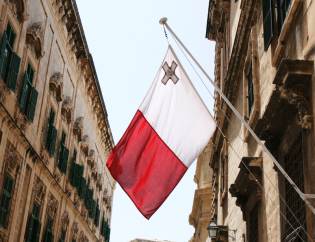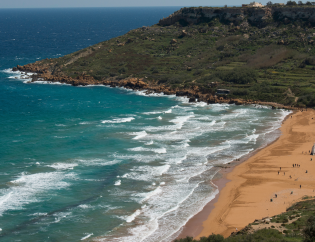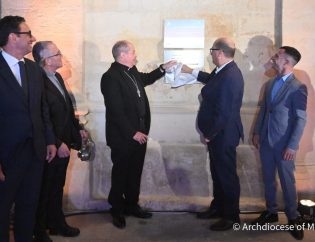The short answer is no, and not even close.
Yet the belief that tourism makes up such a large share of Malta’s economy is widespread. Part of the explanation lies in visibility. Tourism is highly noticeable, especially in the summer months when the influx of visitors fills beaches, restaurants and streets. The other part stems from a misunderstanding of economic calculations, where expenditure figures are mistakenly equated with overall economic contribution.
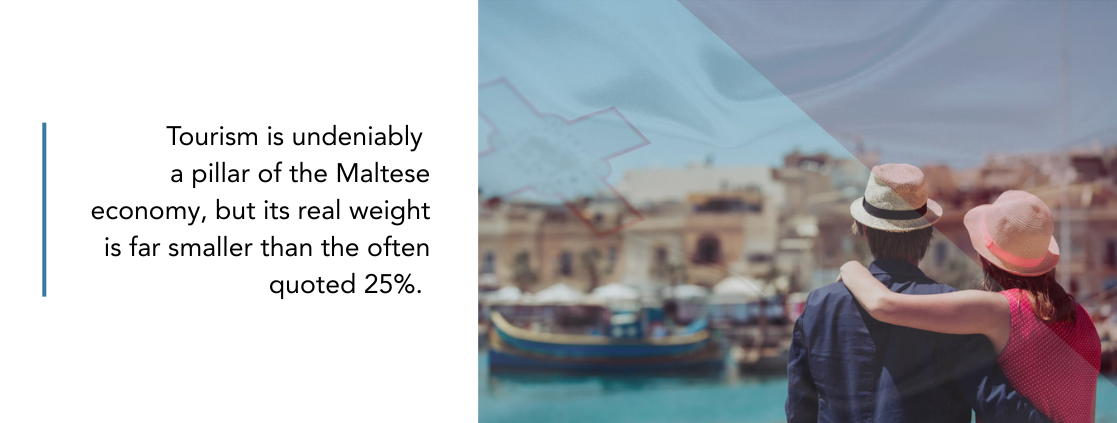
Taking 2024 as an example, Malta welcomed 3,563,618 tourists who spent a total of 22.9 million nights in the country and generated €3.29 billion in expenditure. In the same year, Malta’s GDP stood at €22.47 billion, which means that tourist expenditure amounted to 14.6% of GDP. If we focus only on the third quarter, between July and September, tourist spending reached €1.27 billion against a GDP of €5.88 billion, which puts the ratio at 21.6%. This is closer to the 25% figure often quoted in the media, but it remains an incorrect comparison since it confuses spending with value added.
In reality, of the €3.29 billion that tourists spent in 2024, only €2.47 billion benefited the Maltese economy, mainly because 78% of tourists travelled to Malta with foreign airlines and hence the €0.82 billion travel costs never touch the Maltese economy. More importantly, economists do not measure the economy in terms of spending but in what actually impacts the economy, that is, in terms of value added, which captures the real contribution of each sector. Tourism is particularly complex in this regard, as it is not classified as a single sector in national accounts but rather spans sectors such as accommodation, food services, transport and retail. The table below shows the sectors in which tourists spent the most in 2024.
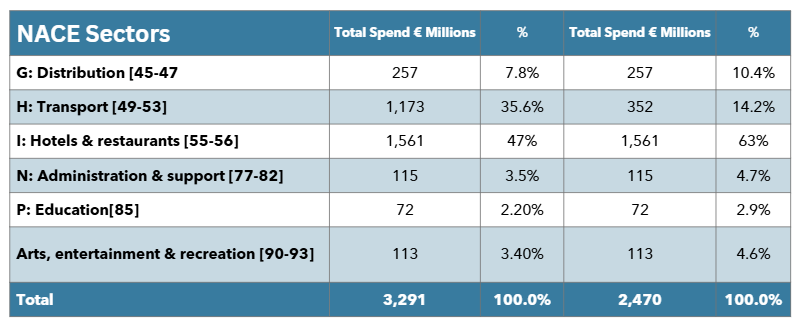
This table shows the sectors in which tourists spent the most in 2024.
To understand tourism’s true impact, as economists, we turn to input-output analysis, which measures not just the direct contribution of tourism-related sectors but also the indirect and induced effects. Indirect effects arise when tourism creates business for suppliers, for example, farmers providing vegetables to restaurants, while induced effects capture the spending of employees in tourism-related industries within the local economy. The analysis also distinguishes between local and imported products, so that spending on an imported item is excluded from Malta’s value added.
The results for 2024 show that the €2.47 billion of tourist spending that reached the Maltese economy generated €1.49 billion in gross value added (GVA) when only direct and indirect effects are considered. When induced effects are included, this rises to €2.03 billion. In the context of Malta’s total GVA of €20.77 billion, this means that tourism contributed between 7.2% and 9.8% of the economy in 2024. During the third quarter, the contribution rose to between 10.8% and 14.7%, reflecting the seasonal nature of the sector.
Tourism is undeniably a pillar of the Maltese economy, but its real weight is far smaller than the often quoted 25%. In reality, it contributes closer to 7–10% of annual economic activity, climbing to around 15% in the peak summer months. Understanding this distinction matters: overstating its size risks skewing policy decisions and overlooking other vital sectors. At the same time, the debate cannot end with numbers alone, because tourism also brings significant costs such as on infrastructure, the environment, and the quality of life for residents. Recognising both its true economic scale and its wider impact is essential for shaping a sustainable path forward. And perhaps that, rather than its share of GDP, is the conversation Malta really needs to have.
Compiled and written by Kurt Muscat Manager, EMCS Advisory Services




